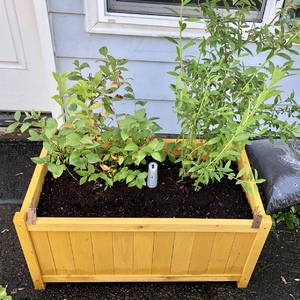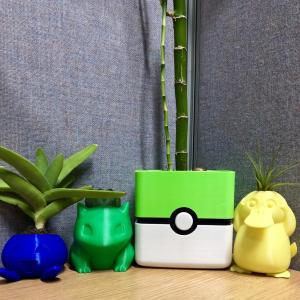文章
莹723
2020年09月22日

Strawberries are easy and fun to grow. Plant strawberry runners or young plants in spring or autumn, and you’ll be rewarded with masses of delicious strawberries from late spring. Grow strawberries in a well prepared strawberry bed or planter, in full sun. And add some garden compost.

—How to grow strawberries from runners
Plant bare-rooted strawberry runners in spring or late summer/autumn.
Prepare the soil by digging in well-rotted garden compost and apply a dressing of sulphate of potash fertiliser.Bury their roots, about 30-45cm apart, then firm the soil around. Water well for the first few weeks.
Strawberries are also suited to growing in pots and hanging baskets. Use deep pots at least 15cm wide and plant one strawberry per pot. They thrive in moist but well-drained conditions, so use a soil-based compost with a deep layer of gravel or broken crocks in the base.

—Look after strawberry plants
To encourage flowering and fruit set, feed your strawberry plants with tomato fertiliser (follow the pack instructions) and water regularly. Avoid wetting any of ripening fruits to prevent grey mould.
Tuck some straw around the plants just before the fruit starts to develop. This helps to keep the berries clean and deters slugs and snails.
For next year’s crop, after fruiting finishes, cut off foliage about 5cm above ground level and give plants a good feed with a general-purpose fertiliser.
After three to four years, fruit size and quality declines so you need to replace your plants with new stock.

—Harvest
Once strawberries have been picked, the ripening process stops. So, wait until the berries are fully red before harvesting. Simply pinch through the stalks,avoid bruising the fruit.

—Store
As strawberries are perishable, it’s best to eat them straight from the plant, avoid the sun. You can store unwashed fruit for a few days in the fridge. If you’re lucky enough to have a glut, whizz them into delicious smoothies or use to make jam,or freeze them.

-Solve problem
Protect strawberry plants against slugs and snail attacks.
Grey mould can be a problem in wet weather, causing the berries to rot. Water plants in the morning rather than in the evening to give them time to dry out.

——Great types to grow
Summer-cropping strawberries:
• ‘Elsanta’ – heavy cropper with large, tasty, red fruits
• ‘Elvira’ – heavy crops and good disease resistance
• ‘Hapil’ – large glossy fruits, even in dry conditions
• ‘Honeoye’ – prolific fruiter with large, firm berries
• ‘Pegasus’ – sweet, juicy, top-quality berries
• ‘Symphony’ – good yields and fairly pest resistant
Everbearing strawberries:
• ‘Aromel’ – abundant dark red, juicy berries
• ‘Christine’ – sweet fruits that ripen in late May
• ‘Mara des Bois’ – large, deliciously aromatic fruits


—How to grow strawberries from runners
Plant bare-rooted strawberry runners in spring or late summer/autumn.
Prepare the soil by digging in well-rotted garden compost and apply a dressing of sulphate of potash fertiliser.Bury their roots, about 30-45cm apart, then firm the soil around. Water well for the first few weeks.
Strawberries are also suited to growing in pots and hanging baskets. Use deep pots at least 15cm wide and plant one strawberry per pot. They thrive in moist but well-drained conditions, so use a soil-based compost with a deep layer of gravel or broken crocks in the base.

—Look after strawberry plants
To encourage flowering and fruit set, feed your strawberry plants with tomato fertiliser (follow the pack instructions) and water regularly. Avoid wetting any of ripening fruits to prevent grey mould.
Tuck some straw around the plants just before the fruit starts to develop. This helps to keep the berries clean and deters slugs and snails.
For next year’s crop, after fruiting finishes, cut off foliage about 5cm above ground level and give plants a good feed with a general-purpose fertiliser.
After three to four years, fruit size and quality declines so you need to replace your plants with new stock.

—Harvest
Once strawberries have been picked, the ripening process stops. So, wait until the berries are fully red before harvesting. Simply pinch through the stalks,avoid bruising the fruit.

—Store
As strawberries are perishable, it’s best to eat them straight from the plant, avoid the sun. You can store unwashed fruit for a few days in the fridge. If you’re lucky enough to have a glut, whizz them into delicious smoothies or use to make jam,or freeze them.

-Solve problem
Protect strawberry plants against slugs and snail attacks.
Grey mould can be a problem in wet weather, causing the berries to rot. Water plants in the morning rather than in the evening to give them time to dry out.

——Great types to grow
Summer-cropping strawberries:
• ‘Elsanta’ – heavy cropper with large, tasty, red fruits
• ‘Elvira’ – heavy crops and good disease resistance
• ‘Hapil’ – large glossy fruits, even in dry conditions
• ‘Honeoye’ – prolific fruiter with large, firm berries
• ‘Pegasus’ – sweet, juicy, top-quality berries
• ‘Symphony’ – good yields and fairly pest resistant
Everbearing strawberries:
• ‘Aromel’ – abundant dark red, juicy berries
• ‘Christine’ – sweet fruits that ripen in late May
• ‘Mara des Bois’ – large, deliciously aromatic fruits

0
0
文章
Miss Chen
2018年08月12日

Few plants are more versatile than the begonia (Begonia spp.), which comes in many different types. One group is especially well-adapted to growing in a hanging planter or basket, either outdoors or in the house. This type of begonia is called trailing or scadent -- scadent means "climbing" -- because its branches can become quite long, in some varieties up to 8 feet, making them ideal for hanging planters. For example, some types of tuberous begonias (Begonia tuberosa) have this type of growth habit and do especially well as hanging plants. They grow in U.S. Department of Agriculture plant hardiness zones 9 through 11, but can also grow as annuals or as houseplants, needing only basic care and occasional trimming to thrive.
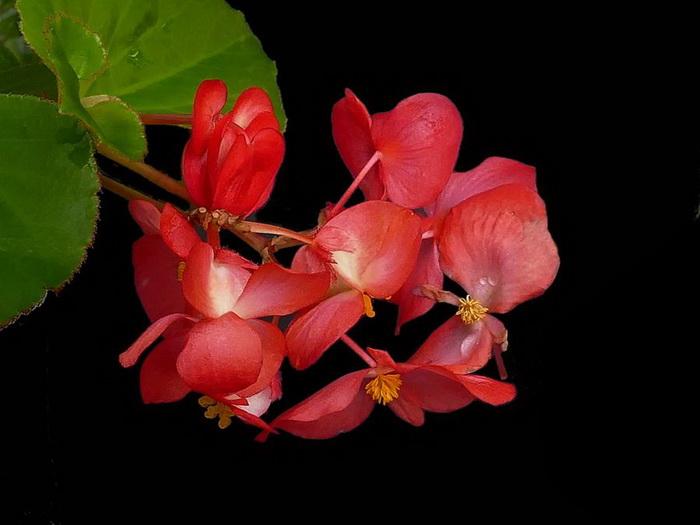
Light Needs
Trailing begonias need strong light to produce a full, multi-stemmed plant with lots of flowers. If you grow the plant outdoors, keep it in a spot that gets some filtered sun in the morning, but avoid full sun at midday or during the hot afternoon hours because this could burn the plant. A spot under a widely-branched tree that provides shifting sun and partial shade is ideal. Indoors, keep a houseplant in a bright spot, such as in an east window where it gets some morning sun.
If the leaves start to fade and become light green, this indicates that the begonia is getting too much light, so move the plant to a shadier spot. If the stems get extra-long, with long distances between leaf origins, this signals that the plant needs more light; in this case, move it to a brighter spot.
Water Needs
Hanging begonia plants do best when soil is evenly moist, but it's important not to over-water because this can cause constantly soggy soil which can damage the plant and, if uncorrected, might kill it. For an indoor-grown plant, water whenever the top inch or two feels dry to the touch, allowing the pot to drain fully. Never keep the pot in a water-filled saucer, because this can cause root rot.
A hanging begonia grown outdoors needs watering whenever its soil surface feels dry. It's a good idea to check this every few days during the summer, because hot weather can cause the soil to dry quickly.
Whether grown indoors or in the garden, a begonia slows its growth during winter when it rests, so cut back watering during the winter months.

Fertilizing Guidelines
Fertilizing a hanging begonia every other time you give it water helps keep the plant growing and flowering during it active season, usually from spring until early fall. Use a balanced formula such as 20-20-20, diluting it half-strength or about 1/4 teaspoon per gallon of water, but check your product label for further directions.
To boost flowering, you can switch to a high-phosphorus formula just before flowering starts, usually in early summer, to help set more flower buds. For example, use a 15-30-15 formula, diluting 1 tablespoon per gallon of water for garden plants and 1/2 teaspoon per gallon for houseplants, but check the product label for additional information. Feed the plant every one or two weeks until the blooming season ends, usually in fall.
Withhold fertilizer during winter to give the plant a rest.
Trimming and Other Care
Trailing begonias in hanging planters can start appearing leggy as the season progresses and the stems get longer. Encourage bushier growth and lateral branching by pinching back the growing tips frequently, using your fingertips or shears that you wipe with rubbing alcohol between cuts to prevent spreading plant diseases. By varying the length of stems through trimming, you can also produce a more shapely plant. For an older plant, remove some old stems now and then to encourage new growth from the plant's base.
Begonias are usually free of significant disease problems, but they can attract several pests, including fluffy white mealybugs. Control these by touching each pest with a cotton swab dipped in rubbing alcohol to destroy it. The plant might also attract spider mites, which form visible, web-like coverings on leaves and flowers. Destroy these pests by spraying the plant thoroughly with insecticidal soap, diluted at a rate of 5 tablespoons per gallon of water; repeat this every two weeks as needed.
Frost Protection
If you grow a hanging begonia outdoors year round and you expect unusual cold or even a bit of frost, bring the plant indoors until weather warms. You can also leave it outdoors, but protect it by hanging a light cloth from the planter's hook so it covers the entire plant, or by placing the planter in a plastic bag that's large enough to enclose the entire plant, tying the bag's open ends to the planter's hook. Be careful when removing any covering, so that you don't injure stems or flower buds.

Light Needs
Trailing begonias need strong light to produce a full, multi-stemmed plant with lots of flowers. If you grow the plant outdoors, keep it in a spot that gets some filtered sun in the morning, but avoid full sun at midday or during the hot afternoon hours because this could burn the plant. A spot under a widely-branched tree that provides shifting sun and partial shade is ideal. Indoors, keep a houseplant in a bright spot, such as in an east window where it gets some morning sun.
If the leaves start to fade and become light green, this indicates that the begonia is getting too much light, so move the plant to a shadier spot. If the stems get extra-long, with long distances between leaf origins, this signals that the plant needs more light; in this case, move it to a brighter spot.
Water Needs
Hanging begonia plants do best when soil is evenly moist, but it's important not to over-water because this can cause constantly soggy soil which can damage the plant and, if uncorrected, might kill it. For an indoor-grown plant, water whenever the top inch or two feels dry to the touch, allowing the pot to drain fully. Never keep the pot in a water-filled saucer, because this can cause root rot.
A hanging begonia grown outdoors needs watering whenever its soil surface feels dry. It's a good idea to check this every few days during the summer, because hot weather can cause the soil to dry quickly.
Whether grown indoors or in the garden, a begonia slows its growth during winter when it rests, so cut back watering during the winter months.

Fertilizing Guidelines
Fertilizing a hanging begonia every other time you give it water helps keep the plant growing and flowering during it active season, usually from spring until early fall. Use a balanced formula such as 20-20-20, diluting it half-strength or about 1/4 teaspoon per gallon of water, but check your product label for further directions.
To boost flowering, you can switch to a high-phosphorus formula just before flowering starts, usually in early summer, to help set more flower buds. For example, use a 15-30-15 formula, diluting 1 tablespoon per gallon of water for garden plants and 1/2 teaspoon per gallon for houseplants, but check the product label for additional information. Feed the plant every one or two weeks until the blooming season ends, usually in fall.
Withhold fertilizer during winter to give the plant a rest.
Trimming and Other Care
Trailing begonias in hanging planters can start appearing leggy as the season progresses and the stems get longer. Encourage bushier growth and lateral branching by pinching back the growing tips frequently, using your fingertips or shears that you wipe with rubbing alcohol between cuts to prevent spreading plant diseases. By varying the length of stems through trimming, you can also produce a more shapely plant. For an older plant, remove some old stems now and then to encourage new growth from the plant's base.
Begonias are usually free of significant disease problems, but they can attract several pests, including fluffy white mealybugs. Control these by touching each pest with a cotton swab dipped in rubbing alcohol to destroy it. The plant might also attract spider mites, which form visible, web-like coverings on leaves and flowers. Destroy these pests by spraying the plant thoroughly with insecticidal soap, diluted at a rate of 5 tablespoons per gallon of water; repeat this every two weeks as needed.
Frost Protection
If you grow a hanging begonia outdoors year round and you expect unusual cold or even a bit of frost, bring the plant indoors until weather warms. You can also leave it outdoors, but protect it by hanging a light cloth from the planter's hook so it covers the entire plant, or by placing the planter in a plastic bag that's large enough to enclose the entire plant, tying the bag's open ends to the planter's hook. Be careful when removing any covering, so that you don't injure stems or flower buds.
0
0
Lucky Coyote
2017年12月24日

The fist one is a planter I just gifted, the other two are gifts that I made a while ago and they're doing amazing ❤️💕
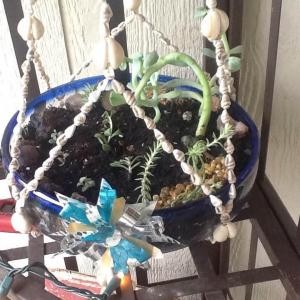
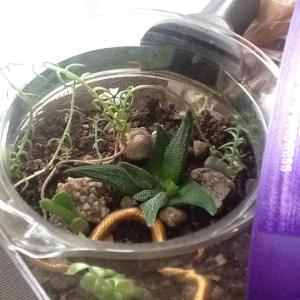




2
0
成长记
KayleeShedd
2017年09月10日

Grace's daughter is actually growing to be a whole new plant! Once she gets too big for this starter planter, I'll put her in a pot next to her mama!
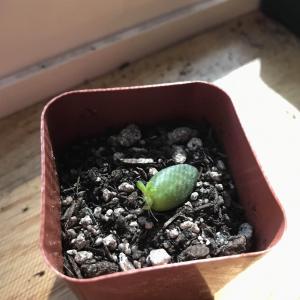

3
0
成长记
DaviddelC
2017年09月07日

It came today! I repotted it and I'll mount it to the wall tomorrow so I can put the planter in it.






4
0


